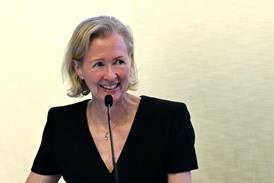Innovations: public Web site can bring together disparate IT groups to exchange information and stop reinventing the wheel
Professor Richard Susskind and Lord Justice Neuberger, the new co-chairmen of the IT and the courts committee (ITAC), intend to set up a public-facing Web site to exchange information about what innovations are already under way to bring the country's courts into the 21st century.
The move will be an attempt to stop the constant reinvention of the wheel that bedevils public sector IT projects, Prof Susskind told the Gazette.
'The courts are lagging behind other areas of public life and the private sector,' Prof Susskind said. 'One of the challenges is that you have innumerable courts and tribunals up and down the country which are doing their own thing, and the main purpose of ITAC is to encourage courts... to exchange ideas with one another to bring one another up to date with interesting developments, and potentially to collaborate too.'
This public Web site should, he said, 'at the very least provide an educational function'. But Prof Susskind has greater hopes for ITAC than that. 'The idea is to develop ITAC not simply as a committee that meets and, face to face, exchanges information, but actually to develop a fairly comprehensive Web site that will allow people to find out in a variety of ways what's going on the world of IT in the courts.
'If we can build a community of people who are more knowledgeable about what's actually going on, then that's going to be a good first step. The important thing to say about ITAC is that it's been a catalyst, a focal point, and our argument is that Lord Justice Neuberger and I both believe we can do more through having a Web site and different kinds of meetings to encourage [participants to work well together].'
Prof Susskind also wants to break tradition with the less pushy side of government committees, by driving disparate IT groups towards consensus. He also suggested that ITAC might be more prescriptive than facilitative in steering stakeholders in particular directions.
One of the big problems ITAC still needs to address, he also said, is the long-standing gulf between civil and criminal justice in terms of IT investment and development. 'The reality is that criminal justice attracts more government funding than civil justice, because there's greater public interest in the criminal law than in civil or family law, [while] developments in civil justice by and large need to be funded by participants in the system. If you look at technology in the criminal justice system, this attracted around at least a billion pounds with a view to try and join up the various hitherto disparate parts.'
This week saw the final Crown Court in England and Wales - Bolton - switch to the XHIBIT system, which provides information on court hearings to those involved. But while XHIBIT is generally praised, its sibling for the magistrates' courts, LIBRA, is still limping towards roll-out.
'[LIBRA] has certainly been going on for a while, there's no question of that. It is well overdue but that's an instance of what I'm saying,' said Prof Susskind. 'The magistrates' court... is where the majority of criminal justice is administered, so most of the criminal justice system remains untouched by technology.'
Prof Susskind said this is the mountain ITAC now needs to climb. 'If we're honest with ourselves, most of the justice system remains fairly untouched - I've no doubt that in the back office of law firms, and to some extent in public bodies, systems are thrumming away, but the reality is that the technology hasn't actually penetrated to the cutting edge, to the actual delivery of the service to the customer, the consumer, and that's the challenge.'
Charity Explorer provides a reputable reference tool for solicitors, will-writers and their clients who want to leave a legacy or charitable gift.
Visit Charity Explorer
Whether you are looking for legal expert witnesses, legal training/CPD providers, international law firms, administration of estates, legal software suppliers, barristers chambers or any other general legal service, the Legal Services Directory will provide a suitable option.
Visit Legal Services Directory

























No comments yet